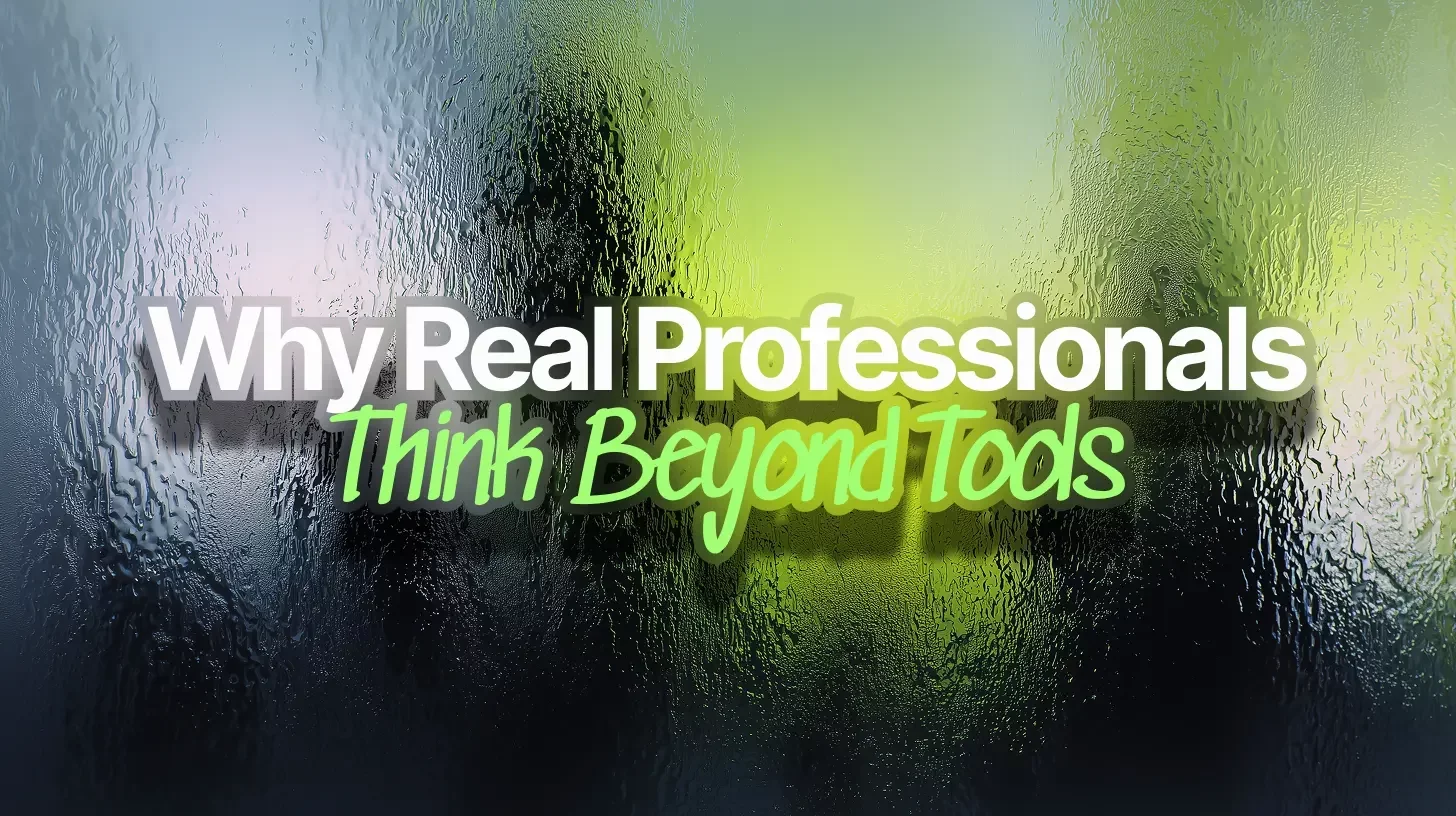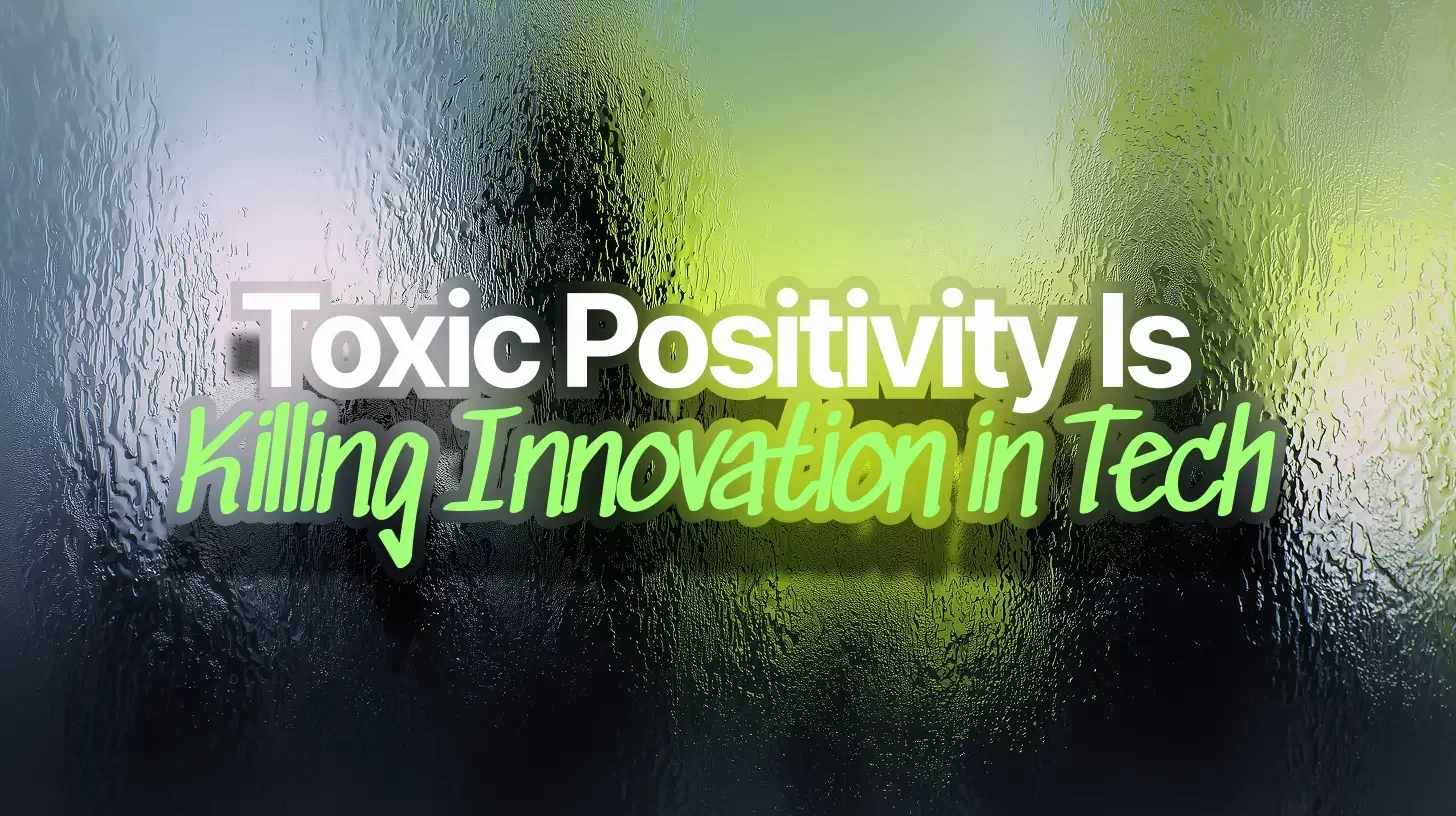The Illusion of Mastery: Why Real Professionals Think Beyond Tools
 Erik Lens
Erik Lens

The Seduction of Mastery
We live in an age of digital wizardry. Every LinkedIn feed is flooded with "Webflow ninjas," "Notion gurus," and "Figma masters" showcasing their latest creations. The animations are smooth, the interfaces are clean, and the portfolio pieces are undeniably impressive.
But here's the uncomfortable truth: mastery of a tool is not the same as professional competence.
Tool expertise has become our new status symbol—a shortcut to credibility that feels safer than the messy, invisible work of true professionalism. We chase certifications, celebrate feature updates, and build our entire identity around being "the person who knows [insert tool here]."
Meanwhile, the real question goes unasked: Are you protecting your clients—or just impressing them?
The False Idol: Tool Obsession vs. Professional Integrity
I've watched brilliant developers become Webflow evangelists, praising its visual editor while conveniently ignoring its bandwidth pricing structure that can cripple a client's budget at scale. I've seen Notion consultants build elaborate systems without warning clients about performance degradation with large datasets, or the vendor lock-in that makes migration nearly impossible.
This isn't malice—it's the natural result of falling in love with our tools instead of serving our clients' long-term interests.
The pattern is predictable:
Discover a powerful tool
Invest time mastering it
Build identity around expertise
Stop questioning its limitations
Recommend it for everything
Ignore warning signs
Let someone else deal with the consequences
Consider the Shopify developer who builds a beautiful e-commerce site but fails to mention that transaction fees will eat 2.9% of every sale forever. Or the Airtable specialist who creates an impressive CRM without documenting that API rate limits will break their client's automation at 5,000 records per hour.
What you don't know will eventually hurt someone—usually your client.
What Real Professionalism Looks Like
True professionals don't just execute—they safeguard outcomes. They understand that expertise without accountability is just expensive incompetence.
Here's what separates professionals from tool enthusiasts:
🔍 Reads the actual documentation (not just tutorials)
Most "experts" learn tools through YouTube videos and blog posts. Professionals read the fine print—the pricing tiers, the API limits, the deprecation notices, the compliance requirements.
🧮 Calculates long-term costs and scaling paths
That Webflow site looks cheap at $23/month until you hit 1M page views and suddenly owe $74/month. The professional runs these numbers upfront and documents them clearly.
📄 Documents tool limitations transparently
Every tool has constraints. Professionals don't hide them—they make them visible so clients can make informed decisions.
🧯 Anticipates failure points and risk scenarios
What happens when the API goes down? When the company gets acquired? When GDPR auditors come knocking? Professionals think three moves ahead.
🚫 Knows when to say "no" to their favorite solution
This is the hardest one. When your expertise becomes your identity, recommending against your specialty feels like career suicide. But sometimes the right answer is "we shouldn't build this at all."
🧠 Thinks beyond the build to maintenance, migration, and trust
The work doesn't end at launch. Professionals consider the total cost of ownership—including the invisible labor of updates, backups, security patches, and eventual migrations.
You build a gorgeous site but forget GDPR compliance—who pays the €20M fine? You create an elaborate automation that breaks when the API changes—who works the weekend to fix it? You lock a client into a platform that triples its pricing—who explains that to their board?
Surface vs. Substance: The Iceberg Metaphor
Think of professional competence as an iceberg.
Above the surface (visible, celebrated): sleek animations, pixel-perfect UI, impressive portfolios, viral social posts, quick wins, demo-ready features.
Below the surface (invisible, critical): thorough documentation, cost projections, failure scenario planning, compliance research, ethical accountability, maintenance protocols, migration strategies, vendor risk assessment.
The tragedy is that we've built an entire industry culture that celebrates only what's above the waterline. We give awards for design, not due diligence. We follow influencers who showcase features, not the boring professionals who read terms of service documents.
But professionalism lives below the surface. It's in the spreadsheets that model five-year costs. It's in the decision to recommend a less exciting solution because it's more sustainable. It's in the difficult conversations about constraints and trade-offs.
A Personal Reflection
While mastering tools like Webflow, I've always made it a practice to dig deeper than the marketing materials. This habit has saved clients from expensive mistakes more times than I can count.
Take analytics tools, for example. When everyone was rushing to implement Hotjar, I recommended Microsoft Clarity instead. Why? Because I actually read the documentation. Hotjar requires a separate data processing agreement to be GDPR compliant in the EU—despite their website prominently displaying "GDPR compliant" badges. Most agencies never discovered this until audit time. Clarity, meanwhile, is not only truly compliant out of the box but also completely free.
Or consider Adobe Fonts API integration. While developers love the convenience, I warn clients against it. You're essentially putting your site's typography at the mercy of Adobe's business decisions and server uptime. What happens when they change pricing, deprecate the API, or simply have an outage? Your fonts disappear. I've seen too many sites break because someone took a shortcut with external dependencies.
This approach extends beyond tools to anticipating regulatory changes. I started warning clients about stricter GDPR enforcement years before the major penalty cases hit headlines. Not because I'm psychic, but because I read the actual legislative updates instead of just the tech blog summaries.
The pattern is simple: read the fine print, anticipate the problems, build processes that prevent burnout rather than create it.
Call to Maturity: Becoming an Architect, Not a Technician
The difference between a technician and a professional architect isn't skill level—it's accountability horizon.
Technicians optimize for immediate execution. They ask: "How can I build this?" Architects optimize for long-term outcomes. They ask: "Should this be built at all, and if so, how do we ensure it serves its purpose for years?"
This maturity manifests as willingness to kill your own favorite solution if it's not fit for purpose. It means recommending boring, stable tools over exciting new ones. It means having difficult conversations about constraints instead of just celebrating possibilities.
This principle extends far beyond technology. Financial advisors who recommend diverse portfolios over hot stocks. Doctors who prescribe lifestyle changes over new medications. Lawyers who advise clients to settle rather than litigate. In every profession, maturity means thinking beyond your immediate expertise to broader consequences.
The common thread is responsibility—not just for your output, but for its impact over time.
The Invisible Work is the Most Valuable
Real professionalism is often invisible and always unglamorous. It's the research nobody sees, the difficult conversations nobody celebrates, the conservative recommendations that prevent disasters instead of creating portfolio pieces.
It's reading 40-page terms of service documents so your clients don't have to. It's building cost models that account for scenarios nobody wants to discuss. It's saying "no" when "yes" would be easier and more profitable.
This work rarely gets applauded. There are no awards for preventing problems that never happen. No one shares screenshots of well-documented limitations or gives standing ovations for realistic project timelines.
But everyone benefits from it. The client who avoids vendor lock-in because you researched alternatives. The team that doesn't work weekends because you planned for load testing. The business that maintains healthy margins because you modeled long-term costs accurately.
The mark of true professionalism isn't being known for a tool—it's being trusted with outcomes.
Are you ready to make that change?
The next time someone asks what you specialize in, try answering with a problem you solve rather than a tool you use. See how different the conversation becomes.
Get notified when we’re launching
Be part of the excitement: receive exclusive launch updates and notifications
Latest articles
Learn how to build your website and navigate tech with expert advice.

Toxic Positivity Is Killing Innovation in Tech
Research-backed exposé of how "good vibes only" culture destroys innovation. Academic studies prove enforced optimism—from leadership and fanboy communities—creates broken feedback loops, inflated metrics, and persistent operational waste. Includes detection methods, mitigation strategies, and framework for productive criticism.


The Illusion of Mastery: Why Real Professionals Think Beyond Tools
This article challenges the tech industry's obsession with tool expertise, arguing that true professionalism isn't about mastering Webflow or Notion—it's about understanding long-term implications, hidden costs, and risks. It exposes how tool fanaticism creates blind spots that hurt clients, from ignored compliance requirements to overlooked scaling costs. Using real examples, the piece reframes professionalism as accountability for outcomes rather than execution of features, encouraging creators and developers to evolve from tool technicians to outcome guardians.
